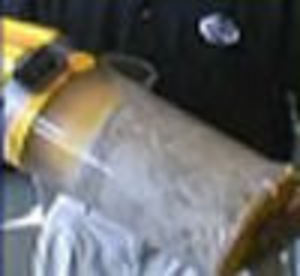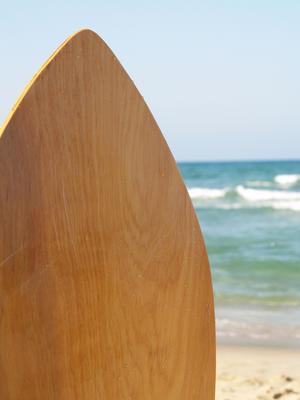Analyzing Hispanic groups in America is a long and informative journey. Hispanics are not just one culture of people; they are a multitude of different cultures with different political views, customs, religious, familial, and other conventions that make each group unique and at times similar to the others. In this paper the author will introduce you to four different Hispanic groups. The Mexican Americans, a culture that is rooted in Mexico and trying to blossom in the United States; the Puerto Ricans, already considered United States citizens, but not always treated the same; Cuban Americans, who have left a country in political and economical turmoil to make a better life for themselves; and the Central Americans, consisting of people from many different Central American countries.
Mexican Americans have been in the United States for many years. They have traditionally been viewed as migrant workers who would come and do farm work or work in orchards and then return to Mexico. They have changed from the role of migrants to immigrants. Mexican Americans typically speak Spanish and are being taught, in bilingual classes, the English Language.
Mexican Americans have many values that differ from the values of a typical U.S. citizen. According to Mexico: language, culture, and etiquette, (2004), the familial values of Mexican Americans are different than those of the normal values held by U.S. citizens. The core of the Mexican-American social structure lies with the family. Women, while greatly revered, are still seen as secondary to their husbands; the husbands are seen as the authority figure and the decision-maker for the family. Families are typically very large and the extended family is considered just as important as the immediate family.
Catholicism is the religion of choice for a large portion of Mexican Americans. According to Weisman (2004), “…Mexicans endorse holding greater moral-religious values than do their Anglo-American counterparts.” In U.S. politics the Mexican American people where left outside, until Alberto Gonzales, a Mexican American, was appointed as the United States Attorney General. Many Mexican Americans do not make typically make as much money as their Anglo-American counter parts. “Among third- and higher-generation men in 1989, Mexicans averaged 21 percent lower wages than non-Hispanic whites…” (Trejo, 1997) These figures are a bit aged, but one can almost count on the fact that the figures have been reduced over the years; there is still a significant economic gap. Language barriers may be part of this, though as the years pass this is becoming less of an issue.
Puerto Ricans
Puerto Ricans are considered U.S. citizens, as Puerto Rico is a territory of the United States. Puerto Ricans are typically very proficient in both English and Spanish, making life for them in the United States somewhat easier. In contrast to Mexican Americans, according to Fukuyama (1993) forty-percent, now probably more, of Puerto Rican Families are headed by women. Religion for Puerto Ricans is as diverse as their Anglo-American counterparts. Puerto Ricans may be Baptist, Catholic, Methodist, Muslim, or any of the other worlds religions. Many Puerto Ricans that live on mainland United states live in or around New York city. The term ‘Nuyorican’ is used to identify New Yorkers born in Puerto Rico or of Puerto Rican descent who live in or near New York City. The word Nuyorican derives from a combination of the words ‘New York’ and ‘Puerto Rican'” (Magaly, 2006).
In politics, Puerto Ricans have many of the same rights as any other U.S. citizen. According to Rosenberg (2005), even though Puerto Ricans have been considered citizens of the United States since 1917, they can not vote for the president. They also are exempt form paying federal income tax. Though some of the privileges associated with citizenship have been withheld from Puerto Ricans, they are allowed “…unrestricted U.S. Migration…[which has] made New York city the one place with the most Puerto Ricans anywhere in the world (over one million)” (Rosenberg, 2005) This immigration privilege is something many Hispanics would love to have.
Cuban Americans
Cuban Americans have a long and sometimes bad history. Many Cuban Americans or their ancestors arrived here from Cuba looking for a better life away from their tyrannical government, horrible living conditions, and economic struggle. Cuban Americans culture is heavily influenced by the Spanish colonists that once settled the island.
This influence has had a major impact on Cuban American religion. Most Cuban Americans according to Wikipedia (2006) belong to the Roman Catholic Church. There are also many Protestants, those who believe in Santeria, Jewish, and nonreligious Cuban Americans.
Many Cuban Americans have assimilated into mainstream culture. They are politically active with three members in the United States House of Representatives and two Senators in the House of Senate. They have been economically successful in “…establishing businesses and developing political clout by transforming Miami from a beach retirement community into a modern city with distinct Hispanic flavor” (Wikipedia, 2006)
Cubans have come a long way in society compared to many Hispanic cultures. They have persevered through a tyrannical political leader and economic hard ship. They have came across 90 miles of ocean to reach the shores of Florida and their freedom. The Cuban Americans have come to the United States and gave up many of their traditions, and through assimilation, they have made a better life for themselves. They are accepted in Florida and are know as hard and honest workers. They have provided much talent in this country also, such as Ricardo Montalbon, Bob Vila, and many other greats.
Venezuelan Americans
Another prevalent Ethnic group that has immigrated to the United States are the Venezuelan Americans. According to Walker (n.d.), many Venezuelan Americans are of Spanish, Italian, or Portuguese decent, and identify themselves as white. Indeed many people do not even know when they are passing a Venezuelan American on the streets. Many Venezuelans came to the United States to attend college and stayed after graduation.
The familial values of Venezuelan Americans are different than those of a typical American family. “Family ties are strong…[their] children are taught at an early age to view the family as the key unit of society” (Walker, n.d.) These ties sometimes make it hard for Venezuelan Americans to integrate or assimilate into mainstream society, though many do so with ease.
Most Venezuelan Americans are catholic, but do not attend services and other church functions as frequently as other Hispanic groups. Walker (n.d.) says that many religious traditions exist, but are a combination of religious and secular ways. Some secular people are even revered as saints because of “…their good works and positive impact on others” (Walker, n.d.). Venezuelan American are not currently active on the federal government level but many have established careers in local politics and government.
Conclusion
These four distinctive groups have many commonalities and differences. The major commonalty with the four groups is that the vast Majority speak Spanish, are catholic, and have a stronger family bond than the typical American. The major difference between the groups is their level of assimilation and cultural beliefs. While the Puerto Ricans and Cuban Americans are very assimilated to the American norm, the Venezuelan Americans are in the middle of assimilation, and the Mexican Americans are the least assimilated. Mexican Americans have such strong bonds with their families, that is greatly interferes with their individuality and their ability to assimilate into mainstream culture.
Reference:
- Cuban American, (2006). Retrieved June 18, 2006, from Wikipedia Web site: en.wikipedia.org/wiki/Cuban_American [Encyclopedia Web Site] Fukuyama, F (1993, May). Immigrants and family values. Retrieved June 18, 2006, from UC Davis University of California Web site: heather.cs.ucdavis.edu/pub/Immigration/ImmAndTheFamily/Fukuyama.html [Research Paper from web site] Magaly, R (2006). Puerto Rico people. Retrieved June 18, 2006, from Welcome to Puerto Rico Web site: 72.14.203.104/search?q=cache:WHyXp2XYnLAJ:welcome.topuertorico.org/people.shtml+puert [Web site] Mexico: language, culture, and etiquette. (July 2004). Retrieved June 18, 2006, from Kwintessential Language and Culture Specialists Web site: www.kwintessential.co.uk/resources/global-etiquette/mexico-country-profile.html [Web Site] Trejo, S. J. (1997).Why do Mexican Americans earn low wages?. Journal of Political Economy. 105, 1235-68. [Journal Article] Rosenberg, M (2005, December 29). Geography of Puerto Rico. Retrieved June 18, 2006, from About.com Web site: geography.about.com/od/specificplacesofinterest/a/puertorico.htm [Web site] Walker, D Venezuelan Americans. Retrieved June 18, 2006, from Everyculture.com Web site: www.everyculture.com/multi/Sr-Z/Venezuelan-Americans.html [Web site] Weisman, A. G. (September 2000). Religion: a mediator of Anglo-American and Mexican attributional differences toward symptoms of schizophrenia?. Retrieved June 18, 2006, from Entrez Pubmed Web site: www.ncbi.nlm.nih.gov/entrez/query.fcgi?cmd=Retrieve&db=PubMed&list_uids=11009 [Web site]


